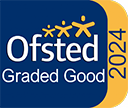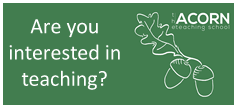Nursery News 6th March 2023
NURSERY NEWS
6th March 2023 – Edition 290
Find out About
A. Reminder: An Open School Event: For Big Nursery Red Group Parents: Basic Skills.
B. Bedtime Stories Event, held last Thursday
C. Dressing up outfits from home.
D. What the children are learning about this week?
E. Phonics program starts this week!
A.Reminder: An Open School Event: For Big Nursery Red Group Parents: Basic Skills.
Miss Skai teaches Big Nursery Red Group children ‘Basic Skills’ on a Wednesday morning. An invitation letter has been sent out to Red Group parents so that we can match up time slots. Parents can join their child’s small group this week, on Wednesday morning.
B. Bedtime Stories Event, held last Thursday
I just wanted to briefly say thank you to all that attended, as the event was a success. The children’s behaviour was amazing. One of our school governors was here, and she commented that every room was so calm. The staff do find it a little daunting, reading to a big group, including so many adults, as it is not something they do regularly. I just want to thank the staff, as they give up their own time to stay and put on these activities for the children. They did such a good job.
C Dressing up outfits from home.
Last week we saw an increasing number of children wearing their own dressing up outfits in school. Role play is an important part of young children’s play as they imaginatively try out storylines and scenarios. However, we do have problems when children bring their own toys and playthings in to school, so we do try to discourage this. I would like to share with you why.
School is all about learning to share and take turns. We have a good selection of dressing up outfits, and these are part of our everyday nursery provision for all children to access. Sometimes children would all like a turn with a particularly popular outfit, like our Gruffalo suit. We talk about being fair, encouraging children to have a turn for a while, and then taking it off to allow a friend to have a turn. We ensure that all dressing up clothes are tidied away ready for grouptime and lunchtime. We ask the children not to wear our dressing up clothes in the garden as some are not suitable to be worn outside for safety reasons, or some of the more elaborate costumes would become damaged if used outside. (We do have some simpler sets of dressing up outfits that are specifically planned for use outside)
So a child comes in wearing an outfit from home…..
Their friends would love a turn.- We explain they can’t as it belongs to one child. They don’t understand…. We share at Nursery? Children say.
Their friends borrow an accessory. ‘I want my cape back’. Again, we can’t talk about sharing, we just have to give the item back to the owner.
Children become envious. ‘I want that’. Children told me last week they asked parents for particular outfits to wear to school.
Some families can’t afford to buy outfits…… They should not have to, we have plenty here!
Did I miss a dress up event? Two parents asked,- No you didn’t.
I know it was World Book Day last week and that would be why some children wanted to dress up as they saw older siblings dressing up for school. Of course that is OK.
However, something for parents to think about?
I know in the outside world, some people have, and some people have not, but in school we like to think that all the children can access all play materials equally.
D. What the children are learning about this week?
The theme in Little Nursery is ‘Maths’.
In Catkins, Mrs. Field will use large foam building blocks to teach the children about their colours. Mrs. Field will help the children build different structures and point out the colours of the blocks that are being used as they work. She will encourage the children to use their colour recognition skills to talk about other colourful items around the school.
In Room Three, Mrs. Brinkley will provide the children with a variety of counting resources. She will model counting to the children and provide opportunities for them to practice on their own. The children will also use balancing scales as they begin to explore comparing weights and quantities.
In the link, Miss Gaffney will teach the children using stamps and number printing. She will work with the children on practising their counting and recognition of numbers 1-5 and 1-10. The children will create art work based on their number knowledge.
Outside, Mrs. Watson will work with the children to search for numbers hidden around the garden. As the children find the numbers they will practice counting with Mrs. Watson and talk about which number they might find next.
The theme in Big Nursery is ‘At the bakers’.
In Room One, Mrs. Patterson will set up a baker shop role play area for the children to explore, she will provide a range of breads and cakes, as well as tills, trolleys and outfits to support their play. Mrs Patterson will also have an exciting activity set up for the children where they will be asked to count out raisin buttons for their laminated gingerbread men. Once the children have ensured that the ginger bread man has enough buttons, Mrs. Patterson will allow the children to eat the raisins.
In Room Two, Miss Skai will be showing the children how to create collages. They will use this knowledge to create their very own gingerbread man collages using a range of materials. Miss Skai will discuss the size of the collage that the children are creating and compare different sizes, while modelling lots of mathematical language.
Outside, Miss Howe will be playing a beanbag hoop game with the children. They will be shown how to aim and throw their bean bags into hoops. Each hoop will have a number attached to it and the children will be encouraged to identify the numerals on each hoop.
Mrs. Cashmore will be focussing on group activities and playing tag with a twist. One child will wear a knitted gingerbread man hat and will sing the words ‘run, run, as fast as you can. You can’t catch me I’m The Gingerbread Man’ as the other children run and try to catch them. All children will take turns being chased and can create their own variations of the game.
E Phonics program starts this week!
Willow Nursery School Phonics Programme
‘Phonics’ is one tool children can use when they are beginning to learn to read and write. A definition of phonics follows on the next page.
The Department for Education (DfE) produced a phonics resource called Letters and Sounds: Principles and Practice of High Quality Phonics, which splits the teaching of phonics into six phases. At Willow, we work on phase 1 activities all the time. Phase 1 describes using activities such as storytelling and singing songs, rhymes, music, role play and listening games. This will give the children opportunites to listen carefully and talk extensively about what they hear, see and do. Phase 1 activities are designed to underpin and run alongside activities in other phases. Phase 2 is an introduction to more formal phonics work and involves teaching the children sets of letters in a specified order. The first set of letters to be learnt are s.a.t.i.p.n because these letters make a greater number of words than any other 6 letters in the alphabet. We feel that the children at Willow are ready to begin focussing on letter sounds in a fun and practical way.
What are we going to do?
- Each child will participate in 1 x 25 minute phonic sessions each week
- We are going to begin teaching 6 letter sounds, s.a.t.i.p.n. and will continue with one letter sound each week until the end of term
- We will teach the children that all letters have a name, and that these letters make a sound. For example: the letter S makes the sound ‘sss’
- We will use a mixture of songs, games, tongue twisters, art, drama and movement activities to teach the letter sounds.
We will use ‘Jolly Phonics’ with the children. Jolly Phonics is the name of a program used to teach phonics. Each week we will:
- Tell the children a story, which includes focussing on the sound we are trying to teach.
- Teach an action to represent the sound
- Send home a picture (linked to the story) for the children to colour, and they can practise writing the letter which represents the sound.
For example: The ‘s’ story involves finding a snake which goes ‘ssss’. The action for ‘s’ involves making a snaking movement with your hand and forearm and saying ’ssss’. The picture to take home is a picture of a snake
Helping at home:
The picture your child brings home will explain to you how to make the action to represent the sound. Talk with your child about what they have learned at school. Learn the actions along with your child. Making the movement may help your child to remember. Have fun!
Phonics
What is phonics?
Phonics is the word used to describe the sounds the letters make. In simple terms, the word ‘cat’ can be read from its three sounds: c-a-t.
These are not the names of the letters as we say them in the alphabet, but the sounds these letters make. The word ‘thick’ is made up of three sounds: th-i-ck, where pairs of letters combine to make a single sound. Similarly, ‘rash’ is made up of three sounds: r-a-sh.
There are 40+ sounds in English but only 26 letters that are used to represent these sounds.
The five basic skills for reading and writing are:
- Learning the letter sounds
- Learning the letter formation
- Blending
- Identifying sounds in words
- Spelling the tricky words
When reading, children need to understand the meaning of the words. Before they can do this, they have to be able to work out what the words say. The phonic skill for this is to look at the letters, say the sounds and hear the words. This is called blending.
The main phonetic skill for writing is to start with the spoken word, then listen, identify and write the sound in that word. The ability to hear the sounds in words is called phonological awareness. For example, with the word ’bin’ if you listen you hear the sounds ‘b……i….n’. Then if you know how to write those letter sounds, you can write the word ‘bin’ without help. This is the opposite to the skill needed for blending.
The letters for the 42 Sounds of English:
See below:
a ……ant, sand, caravan
ai……aim, aid, drain, (long a)
b……bat, bend, crab
c ……cat, cot, duck
d……dog, dip, sudden
e……egg, end, shed
ee……eel, creep, tree (long e)
f……fog, lift, fluff
g……goat, gap, digger
h……hop, hit, hill
i……ink, indian, drink
ie……pie, tie, die (long i)
j……jelly, jet, jumper
k……king, kind, kettle
l……leg, lost, shell
m……man, mill, shrimp
n……nut, nip, spin
o……orange, on, spot
oa……oak, oats, boat (long o)
p…….pig, pet, step
q……queen, quick, quin
r……run, rabbit, barrel
s…..sand, sun, twist
t……top, tug, mat
u…….up, under, lung
ue……due, Tuesday, cue
v……van, vet, give
w…..wind, went, swim
x…..x-ray, ox, flex
y……yell, yes, yellow
z……zoo, zebra, buzz
sh……ship, shop, wish
ch……chop, chick, much
th……this, then, with (voiced th)
th……thin, thick, thimble (unvoiced th)
ng……song, bang, string
oo……look, room, foot (little oo)
oo……moon, spoon, shoot (long oo)
ar……art, arm, start
er……kerb, stern, sister
or……order, corn, storm
oi……oil, ointment, spoil
ou……out, cloud, found



